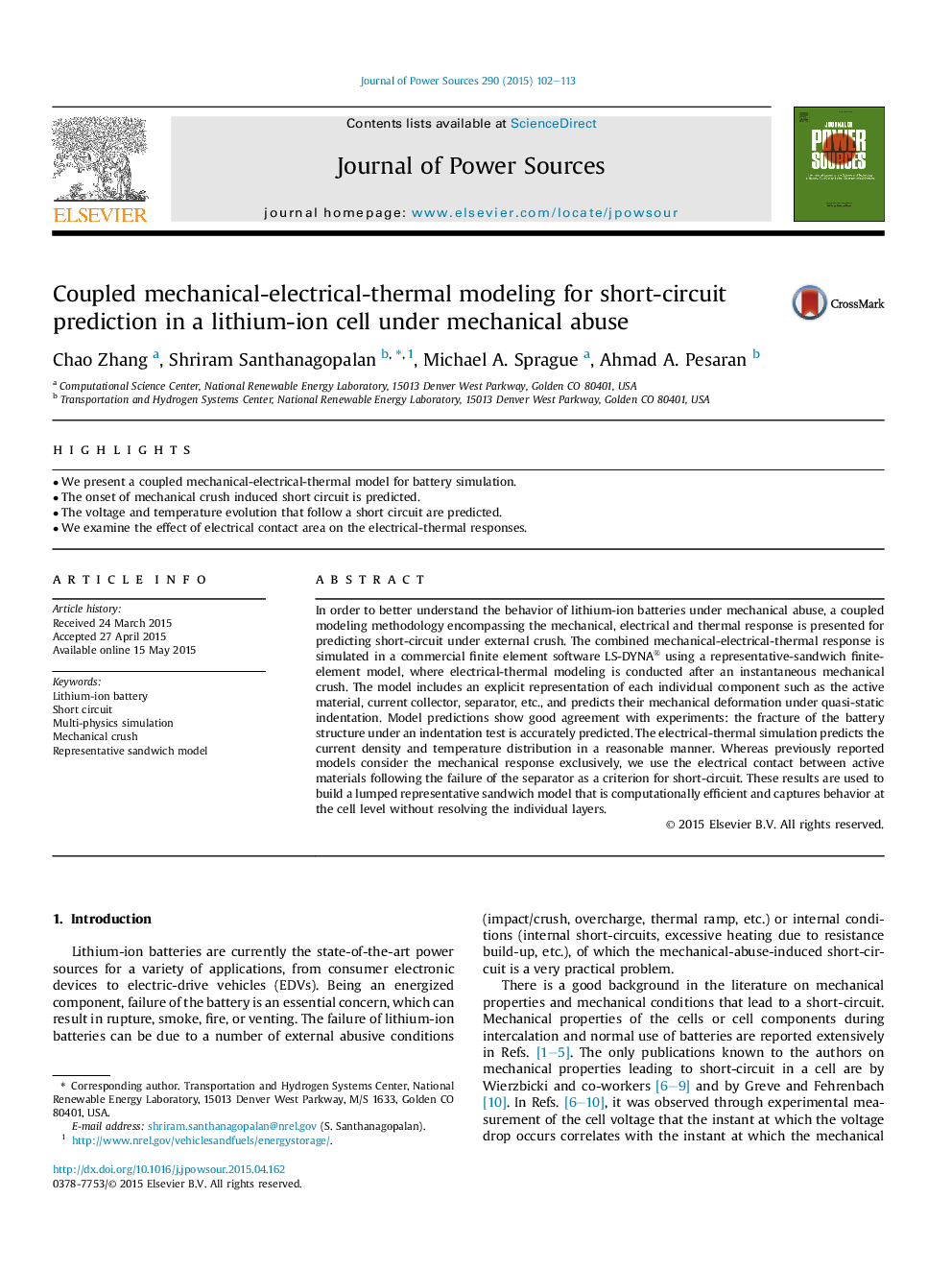| Article ID | Journal | Published Year | Pages | File Type |
|---|---|---|---|---|
| 1286084 | Journal of Power Sources | 2015 | 12 Pages |
•We present a coupled mechanical-electrical-thermal model for battery simulation.•The onset of mechanical crush induced short circuit is predicted.•The voltage and temperature evolution that follow a short circuit are predicted.•We examine the effect of electrical contact area on the electrical-thermal responses.
In order to better understand the behavior of lithium-ion batteries under mechanical abuse, a coupled modeling methodology encompassing the mechanical, electrical and thermal response is presented for predicting short-circuit under external crush. The combined mechanical-electrical-thermal response is simulated in a commercial finite element software LS-DYNA® using a representative-sandwich finite-element model, where electrical-thermal modeling is conducted after an instantaneous mechanical crush. The model includes an explicit representation of each individual component such as the active material, current collector, separator, etc., and predicts their mechanical deformation under quasi-static indentation. Model predictions show good agreement with experiments: the fracture of the battery structure under an indentation test is accurately predicted. The electrical-thermal simulation predicts the current density and temperature distribution in a reasonable manner. Whereas previously reported models consider the mechanical response exclusively, we use the electrical contact between active materials following the failure of the separator as a criterion for short-circuit. These results are used to build a lumped representative sandwich model that is computationally efficient and captures behavior at the cell level without resolving the individual layers.
